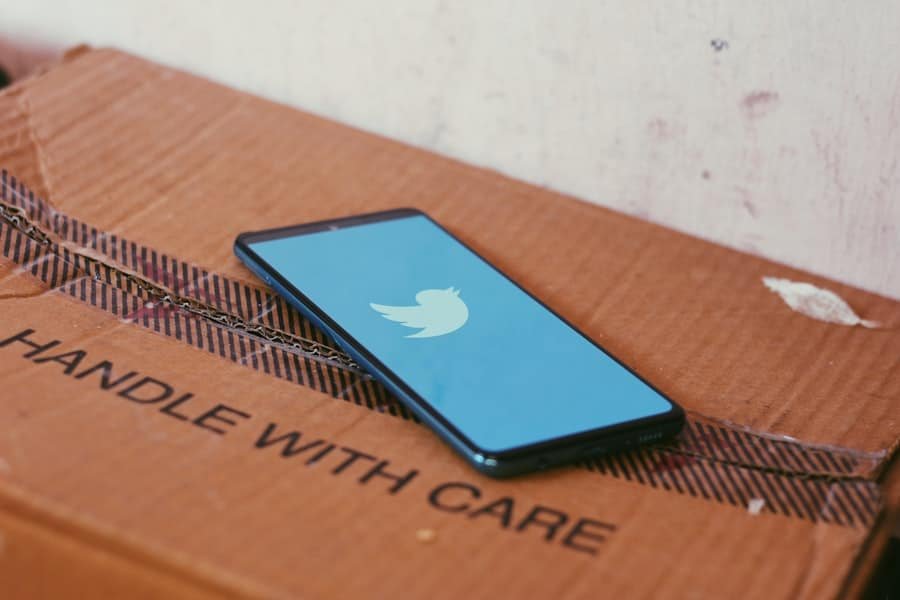In recent years, the fashion and retail industries have witnessed a significant transformation, largely driven by advancements in technology. Among these innovations, virtual try-on technology has emerged as a game-changer, allowing consumers to experience products in a digital environment before making a purchase. This technology has gained traction due to the increasing demand for personalised shopping experiences and the growing prevalence of e-commerce.
As consumers become more accustomed to online shopping, the need for tools that bridge the gap between physical and digital retail has never been more pressing. The rise of virtual try-on technology can be attributed to several factors, including the proliferation of smartphones and high-speed internet access. With the majority of consumers now equipped with devices capable of supporting augmented reality (AR) applications, retailers have seized the opportunity to enhance their offerings.
Brands such as Warby Parker and Sephora have pioneered the use of virtual try-on solutions, allowing customers to see how eyewear or makeup products would look on them without ever stepping foot in a store. This shift not only caters to consumer preferences but also addresses the challenges posed by the COVID-19 pandemic, which accelerated the adoption of contactless shopping experiences.
Summary
- Virtual try-on technology has seen a significant rise in popularity, especially in the fashion industry, due to advancements in augmented reality and artificial intelligence.
- Virtual try-on technology works by allowing consumers to virtually try on clothing, accessories, and even makeup using their smartphones or computers, providing a more immersive and interactive shopping experience.
- The benefits of virtual try-on technology for consumers include the ability to try on multiple items without physically being present in a store, saving time and providing a more convenient shopping experience.
- Retailers can benefit from virtual try-on technology by reducing return rates, increasing customer engagement, and gaining valuable data insights into consumer preferences and behaviour.
- The future of virtual try-on technology looks promising, with potential applications in other industries such as home decor, eyewear, and even virtual real estate tours. However, challenges and limitations such as accuracy and accessibility still need to be addressed for wider adoption.
How Virtual Try-On Technology Works
At its core, virtual try-on technology leverages augmented reality and computer vision to create a realistic representation of how a product will look on a user. The process typically begins with the capture of the user’s image, either through a camera on their device or by uploading a photo. Advanced algorithms then analyse the image to identify key facial features or body dimensions, ensuring that the virtual product aligns accurately with the user’s unique characteristics.
Once the user’s image has been processed, the virtual try-on system overlays the selected product onto the user’s image in real-time. This is achieved through sophisticated rendering techniques that account for lighting, shadows, and even movement, creating an immersive experience that mimics trying on items in a physical store. For instance, when trying on a pair of sunglasses, the technology adjusts the product’s position based on the user’s head movements, providing a seamless and interactive experience.
This level of realism is crucial for instilling confidence in consumers, as they can visualise how products will look in their everyday lives.
The Benefits of Virtual Try-On Technology for Consumers

One of the most significant advantages of virtual try-on technology for consumers is the enhanced convenience it offers. Shoppers can explore a wide range of products from the comfort of their homes without the need to visit multiple stores. This not only saves time but also reduces the frustration often associated with traditional shopping methods, such as long queues and crowded spaces.
With virtual try-on solutions, consumers can experiment with different styles and colours at their own pace, leading to a more enjoyable shopping experience. Moreover, virtual try-on technology empowers consumers to make more informed purchasing decisions. By providing a realistic representation of how products will look on them, shoppers can better assess fit and style before committing to a purchase.
This is particularly beneficial in categories such as clothing and accessories, where fit can vary significantly between brands. As a result, consumers are less likely to experience buyer’s remorse or face the hassle of returns due to items not meeting their expectations. The ability to visualise products in a personalised context fosters greater satisfaction and loyalty among customers.
The Benefits of Virtual Try-On Technology for Retailers
For retailers, virtual try-on technology presents an array of opportunities to enhance customer engagement and drive sales. By integrating this technology into their online platforms, brands can create a more interactive shopping experience that captures consumer attention. This increased engagement often translates into higher conversion rates, as customers are more likely to complete a purchase when they feel confident about their choices.
Additionally, virtual try-on technology can significantly reduce return rates for retailers. One of the primary reasons for product returns in e-commerce is dissatisfaction with fit or appearance. By allowing customers to virtually try on items before purchasing, retailers can mitigate this issue and improve overall customer satisfaction.
This not only saves costs associated with processing returns but also contributes to a more sustainable business model by reducing waste generated from returned products.
The Future of Virtual Try-On Technology
As technology continues to evolve, the future of virtual try-on solutions appears promising. Innovations in artificial intelligence (AI) and machine learning are expected to enhance the accuracy and realism of virtual try-on experiences further. For instance, AI algorithms could analyse user preferences and suggest tailored product recommendations based on past interactions, creating a more personalised shopping journey.
Moreover, advancements in wearable technology may lead to even more immersive experiences. Imagine a scenario where consumers can use smart glasses equipped with AR capabilities to see how clothing fits them while they browse in-store or at home. Such developments could revolutionise the way consumers interact with fashion and retail, blurring the lines between physical and digital shopping experiences.
The Impact of Virtual Try-On Technology on the Fashion Industry

The introduction of virtual try-on technology has had a profound impact on the fashion industry as a whole. It has not only changed how consumers shop but also influenced how brands design and market their products. With access to data generated from virtual try-on interactions, brands can gain valuable insights into consumer preferences and trends.
This information can inform design decisions, allowing companies to create products that resonate more effectively with their target audience. Furthermore, virtual try-on technology has opened up new avenues for marketing and advertising within the fashion sector. Brands can leverage social media platforms to showcase their virtual try-on capabilities, encouraging users to share their experiences online.
This user-generated content serves as powerful social proof, attracting new customers and fostering brand loyalty among existing ones. As fashion becomes increasingly digitalised, those brands that embrace virtual try-on technology are likely to stay ahead of the competition.
Virtual Try-On Technology in Other Industries
While virtual try-on technology is most commonly associated with fashion and beauty, its applications extend far beyond these sectors. The automotive industry has begun exploring similar technologies, allowing potential buyers to virtually “test drive” vehicles or customise features before making a purchase decision. By providing an interactive experience that showcases various options and configurations, manufacturers can enhance customer engagement and streamline the buying process.
Additionally, home decor retailers have adopted virtual try-on solutions to help customers visualise how furniture or decor items will look in their living spaces. By using AR applications that overlay products onto real-world environments through smartphone cameras, consumers can make more informed choices about colour schemes and spatial arrangements. This cross-industry adoption highlights the versatility of virtual try-on technology and its potential to transform various aspects of consumer behaviour.
The Challenges and Limitations of Virtual Try-On Technology
Despite its many advantages, virtual try-on technology is not without its challenges and limitations. One significant hurdle is ensuring accuracy in product representation. Variations in lighting conditions, camera quality, and user positioning can all affect how accurately a product is displayed on-screen.
If users perceive discrepancies between what they see virtually and what they receive physically, it could lead to dissatisfaction and mistrust in the technology. Moreover, there are concerns regarding privacy and data security associated with capturing users’ images for virtual try-on purposes. Consumers may be hesitant to share personal data or images due to fears about how this information will be used or stored by retailers.
Addressing these concerns requires transparent data practices and robust security measures to build trust between consumers and brands. In conclusion, while virtual try-on technology holds immense potential for reshaping consumer experiences across various industries, it must navigate challenges related to accuracy and privacy to fully realise its benefits. As advancements continue to emerge, both consumers and retailers stand to gain from this innovative approach to shopping.
Virtual Try-On Technology is revolutionising the way consumers shop for beauty products online. This innovative technology allows customers to virtually try on makeup and skincare products before making a purchase, providing a more personalised and interactive shopping experience. In a related article on businesscasestudies.co.uk, the growing popularity of cosmetology as a career choice is explored, highlighting the increasing demand for professionals who can provide expert advice and guidance on beauty products. This article further emphasises the importance of staying ahead of industry trends, such as Virtual Try-On Technology, to meet the evolving needs of consumers.
FAQs
What is Virtual Try-On Technology?
Virtual Try-On Technology is a digital tool that allows users to virtually try on clothing, accessories, or makeup products using augmented reality or computer vision technology. It enables users to see how a product would look on them without physically trying it on.
How does Virtual Try-On Technology work?
Virtual Try-On Technology works by using a combination of augmented reality, computer vision, and machine learning algorithms to overlay digital representations of products onto a user’s image or video feed. This allows users to see how the product would look on them in real-time.
What are the benefits of Virtual Try-On Technology?
The benefits of Virtual Try-On Technology include providing a more immersive and interactive shopping experience for customers, reducing the need for physical try-ons, increasing customer confidence in their purchasing decisions, and reducing the rate of product returns for retailers.
Where is Virtual Try-On Technology used?
Virtual Try-On Technology is used in various industries, including fashion, beauty, eyewear, and jewellery. It is commonly integrated into e-commerce websites, mobile apps, and in-store kiosks to enhance the shopping experience for customers.
Is Virtual Try-On Technology accurate?
Virtual Try-On Technology’s accuracy can vary depending on the quality of the technology and the data used to train the machine learning algorithms. While it can provide a realistic representation of how a product would look on a user, it may not always be 100% accurate.
